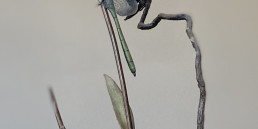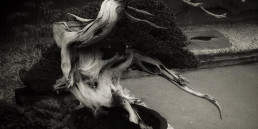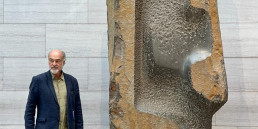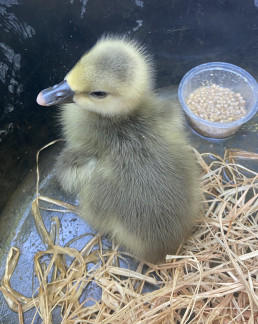A los pinos el viento y el mar/The Wind among the Leaves...and the sea.
Carta de Gines Diaz Pallares, cuando recibe su ejemplar del libro “a los pinos al viento”.
Esta tarde al llegar al muelle en la Graciosa se tiró al mar.
Se tiró de la misma manera que la ballena salió de él.
Satori llamas tú.
Lo sacamos, la cascara, el envase, está mal.
Como un milagro, no hay una sola rama mojada.
Ni ninguno de tus dibujos.
La mar solo quiso adornar los bordes exteriores.
Decorar podar reformar esos bordes tan rectos y planos de las hojas.
Las de libro. salar.
Solo los bordes exteriores. Un milagro digo.
Ahora será el mismo libro. Pero bonsái y ballena.
Haciendo honor a la dedicatoria.
Viento y mar. La Graciosa
Ayer lo vi, cada uno de los bonsái mientras colocaba entre página y pagina servilletas de cocina para recoger la humedad.
Veremos cómo evoluciona esa sal.
Así que estuve rescatando hermosos bonsáis del mar.
En una especie de servicio de urgencias, que acoge una patera petada de bonsái Me acorde que Miquel (Barceló) me hablaba de cómo se adaptó a que sus cuadernos en Mali, se los comieran las termitas y termino poniéndolas a pintar.
Eso me tranquilizo y ahora es mi joya privada A los pinos el viento y al mar.
Muchas gracias, ahora esperare a que estén bien recuperadas las hojas Las de libro. Las otras como te dije intactas.
Invictas.
Tal vez como en los jardines, ajenas a los arboles del mundo.
A los márgenes y marginales del mundo.
Aquí ahora bonanza total, pleno verano. Todo el mundo quemándose al sol. En la tele dicen que es el sol quien nos quema, otro nivel del asunto. Al libro le ha venido de maravilla este tiempo, parece una jarea oreándose. Para mí el pescado oreado es el favorito. Fue muy bonito dentro de todo, había muchísima gente y muchísima descarga y yo allí gritando: ¡el libro, el libro! y corriendo escaleras abajo. El mundo se paró y el libro fue el mundo. nadie se rió. Fue todo un asunto muy serio.
Letter from Gines Diaz Pallares on receiving his copy of the book “The Wind among the Leaves”
This afternoon when he arrived at the quay in La Graciosa he jumped into the sea.
He jumped in the same way the whale jumped out of it.
Satori you call it.
We took it out, the shell, the container, it’s all wrong.
Like a miracle, there’s not a single wet branch.
Nor any of your drawings.
The sea only wanted to decorate the outer edges.
To decorate, to prune, to reshape those straight, flat edges of the leaves.
The ones in the book. salt.
Just the outer edges. A miracle I say.
Now it will be the same book. But bonsai and whale.
Living up to the dedication.
Wind and sea. La Graciosa
Yesterday I saw it, each one of the bonsai while placing kitchen towels between pages to collect the humidity.
We’ll see how that salt evolves.
So I was rescuing beautiful bonsai from the sea.
I remembered Miquel (Barceló) telling me about how he adapted to the fact that his notebooks in Mali were eaten by termites and ended up painting them.
That reassured me and now it is my private jewel «The Wind among the Leaves…and the sea»
Thank you very much, now I will wait until the leaves of the book are well recovered. The others as I told you intact.
Undefeated.
Perhaps like in the gardens, alien to the trees of the world.
To the margins and fringes of the world.
Here now it’s a total bonanza, the middle of summer. Everyone burning in the sun. On TV they say it’s the sun that burns us, another level of the matter. The book has done wonderfully well in this weather, it looks like fish flakes. For me, the dry fish is the favourite. It was very beautiful all in all, there were lots of people and lots of unloading and I was there shouting: the book! the book! and running down the stairs. The world stopped and the book was the world. Nobody laughed. It was a very serious affair.
Verano/Summer
En el jardín no disfrutamos de la llegada del verano como en otros lugares; no supone el comienzo de un merecido descanso ni el anuncio de visitas a lugares lejanos. Cada año preparamos cuidadosamente su llegada, los árboles se protegen con sombreos, se recolocan hacia los sitios más frescos, repasamos los sistemas de riego y hacemos un intrincado calendario de turnos para que nada falle, para que cualquier imprevisto este calculado. Cada año demuestra que no todo puede estar calculado.
Las altas temperaturas durante día y noche y la falta de humedad hacen que los árboles lleguen agotados al mes de septiembre. Con este panorama, hace ya tiempo que decidimos cerrar al público durante los meses de julio y agosto; una vez más, se pone de manifiesto la particularidad de este arte que es además un arte vivo al que hay que respetar sus ciclos.
Con el paso de los años y los cambios evidentes en el clima, hemos ido implementando nuevas medidas, cada vez más sombra, más control del riego, protección de las macetas para evitar los daños por altas temperaturas en las raíces.
No es una estación esperada, pero pronto llegará el otoño, el ciclo de los árboles, las estaciones…continuará
In the garden we do not enjoy the arrival of summer as in other places; it is not the beginning of a well-deserved rest or the announcement of visits to faraway places. Every year we carefully prepare for its arrival, the trees are protected with shades, they are relocated to the coolest places, we review the irrigation systems and we make an intricate calendar of shifts so that nothing fails, so that any unforeseen event is calculated. Every year proves that not everything can be calculated.
The high temperatures during the day and night and the lack of humidity cause the trees to arrive exhausted in September. With this panorama, we decided some time ago to close to the public during the months of July and August; once again, this shows the particularity of this art, which is a living art whose cycles must be respected.
With the passing of the years and the evident changes in the climate, we have been implementing new measures, more and more shade, more control of irrigation, protection of the pots to avoid damage to the roots due to high temperatures.
For us it is not a season to look forward to, but soon autumn will arrive, the cycle of the trees, the seasons…will continue.
La voz del bonsái/Voice of bonsai
El 3 de mayo de 2019 me puse en contacto con el Jardín para proponer la realización de un mapa sonoro del espacio. Soy Antonio Chávez (Anthonius), músico con discapacidad visual y artista sonoro. Tengo un proyecto llamado ATLAS, que inicié en 2013 como un proyecto de vida. En él viajo a países poco turísticos o con costumbres ancestrales para crear mapas sonoros que capturen la esencia de esos lugares. Me interesan especialmente las liturgias religiosas, los ritos ancestrales, el folclore, la artesanía, los antiguos oficios o la gastronomía, porque a través de estos elementos puedo plasmar, en profundidad, la herencia cultural que reflejan esos lugares.
Debo mencionar que conocí a Luis Vallejo a través de su hermano Polo, a quien guardo un enorme cariño, ya que fue la persona que me abrió las puertas del Coro Nacional de Georgia en mi viaje allí. Aún recuerdo el día que le dije a Polo que me habían regalado un bonsái: él sonrió y me dijo “Deberías conocer a mi hermano Luis”. Ahí empezó todo. Poco después, escribí a Luis para contarle mi deseo de grabar el museo y a él realizando trabajos con los árboles. Y os tengo que contar que lo que más ilusión le hizo fue que la grabación sería de los sonidos… y no de las imágenes. Muchos ya conoceréis a Luis; seguro que otros no… A veces pienso que tener suerte en la vida es conocer a personas como él. Pero, como no quiero que se ruborice, solo diré que, si juntáramos a cien como él, el mundo sería bueno, honesto y absolutamente bello.
La propuesta estaba vinculada a un reportaje para RTVE, y pronto nos pusimos manos a la obra. Grabé sonidos relacionados con los cuidados de los árboles: el riego, el pinzado, el alambrado, la limpieza y otras tareas propias del jardín. Pero, sobre todo, pudimos plasmar la verdadera relación que existe entre los árboles, el jardín y el maestro.
Pocos días después volví al museo para mostrar mi trabajo. Allí pudimos escuchar lo que, para mí, representa una experiencia no visual pero cargada de narrativa: una forma de vivir el espacio a través del sonido, permitiendo que cualquier persona pueda imaginar y comprender cómo es la vida en el jardín.
Hoy, este mapa sonoro está a punto de formar parte del museo y, a través de un código QR, los visitantes podrán experimentar la grata sensación de escuchar a Luis Vallejo explicando, con su propia voz, todo lo relacionado con el mundo del bonsái.
On 3 May 2019 I contacted the Garden to propose the creation of a sound map of the place. I am Antonio Chávez (Anthonius), a visually impaired musician and sound artist. I have a project called ATLAS, which I started in 2013 as a life project. In it, I travel to countries that are not very touristic or with ancestral customs to create sound maps that capture the essence of those places. I am especially interested in religious liturgies, ancestral rites, folklore, crafts, ancient trades or gastronomy, because through these elements I can capture, in depth, the cultural heritage reflected in those places.
I should mention that I met Luis Vallejo through his brother Polo, whom I am very fond of, as he was the person who opened the doors of the Georgian National Choir to me on my trip there. I still remember the day I told Polo that I had been given a bonsai: he smiled and said ‘You should meet my brother Luis’. That’s when it all started. Shortly afterwards, I wrote to Luis to tell him about my desire to film the museum and him working with the trees. And I have to tell you that what made him most excited was that the recording would be of the sounds… and not of the images. Many of you already know Luis; I’m sure others don’t… Sometimes I think that to be lucky in life is to meet people like him. But, as I don’t want him to blush, I’ll just say that if we got a hundred people like him together, the world would be good, honest and absolutely beautiful.
The proposal was linked to a report for RTVE, and we soon got down to work. I recorded sounds related to the care of the trees: watering, pruning, wiring, cleaning and other garden tasks. But above all, we were able to capture the real relationship between the trees, the garden and Luis.
A few days later I returned to the museum to show my work. There we were able to listen to what, for me, represents a non-visual but narrative experience: a way of experiencing the space through sound, allowing anyone to imagine and understand what life in the garden is like.
Today, this sound map is about to become part of the museum and, through a QR code, visitors will be able to experience the pleasant sensation of listening to Luis Vallejo explaining, in his own voice, everything related to the world of bonsai.
El puente rojo/ The red bridge
La semana pasada, un conocido diario digital, publicaba la noticia de que aquí en Alcobendas se puede visitar Japón sin necesidad de salir de España.
Cualquiera que conozca la colección, puede estar de acuerdo…pero la periodista no se refería a esa visión poética de cómo los árboles son capaces de trasladarte a su lugar de origen. Su enfoque era puramente informativo.
El artículo se ilustra con la fotografía de un jardín de Japón, donde puede verse un puente rojo sobre un riachuelo rodeado de piedras, pinos y azaleas e incluye una serie de datos que reflejan una espectacular capacidad de inventiva. Habla de un híbrido entre el parque, el jardín de Japón, nuestro museo, los parques infantiles repartidos por Alcobendas y la pagoda con la reproducción de la campana de la paz mundial. Este fantástico lugar, presidido por el puente rojo, tiene una historia, unos rigurosos horarios de apertura y combina la estética japonesa con los parques infantiles temáticos…en fin; Japón a solo unos minutos de la capital.
Este despliegue informativo ha tenido como consecuencia una horda de visitantes desorientados que preguntaban desesperados por el famoso jardín con el puente rojo. Nunca lo encontraron.
Last week, a well-known digital newspaper published the news that here in Alcobendas you can visit Japan without leaving Spain.
Anyone familiar with the collection might agree… but the journalist was not referring to the poetic vision of how the trees in the collection are able to transport you to their place of origin. Her approach was purely informative.
The article is illustrated with a photograph of a garden in Japan, where you can see a red bridge over a stream surrounded by stones, pines and azaleas, and includes a series of facts that reflect a spectacular capacity for inventiveness. She creates a hybrid between the park, the garden of Japan, our museum, the playgrounds scattered around Alcobendas and the pagoda with the reproduction of the world peace bell. This fantastic place, presided over by the red bridge, has a history, strict opening hours and combines Japanese aesthetics with themed playgrounds… in short, Japan just a few minutes from the capital.
This information display has resulted in a horde of disoriented visitors desperately asking for the famous garden with the red bridge. They never found it.
Kusamono
Plantas de acento
Todo el que empieza con las plantas de acento o kusamono, experimenta la ansiedad propia de tener ante sí un mundo entero de posibilidades.
Cualquier planta, cualquier contenedor, cualquier forma. Todo vale. Son trocitos de paisaje, plantas que conviven en su lugar de origen, normalmente vivaces en las que ver el paso de las estaciones.
Frutos, flores cuando llega la primavera, formas de plantas que se arrastran por el suelo o se elevan. El color apagado de las gramíneas cuando se acerca el invierno o el verde de los brotes tiernos de primavera….y el tiempo. Con el tiempo el kusamono evoluciona, es un micromundo, se cubre de musgo, lo invaden otras plantas, se transforma.
El kusamono sugiere un hábitat natural, una pradera, un humedal, un bosque.. como el bonsái debe ser capaz de trasladarnos a un momento vivido en la naturaleza y de hacernos conscientes de la estación que vivimos y de todos sus cambios.
Accent plants
Anyone who starts with accent plants, or kusamono, experiences the anxiety of having a whole world of possibilities before them.
Any plant, any container, any shape. Anything goes. They are little pieces of landscape, plants that live together in their place of origin, usually perennials in which to see the passing of the seasons.
Fruits, flowers when spring arrives, plant forms that creep along the ground or rise up. The dull colour of grasses as winter approaches or the green of tender spring shoots….and time. Over time the kusamono evolves, it is a micro-world, it is covered with moss, it is invaded by other plants, it transforms.
The kusamono suggests a natural habitat, a meadow, a wetland, a forest… like the bonsai it must be able to transport us to a moment lived in nature and make us aware of the season we are living in and all its changes.
Amigos/Friends
Ayer Invitamos a los amigos del jardín y celebramos.
Celebramos la primavera, que este año el jardín cumple treinta años desde su inauguración y que aquí seguimos…y celebramos el principio de una nueva etapa que esperamos que dure al menos otros treinta años. Presentamos el proyecto “Los amigos del jardín” que nace con vocación de ser el origen de algo grande.
Fue un día perfecto, después de tantas lluvias el jardín amaneció luminoso, exuberante y lleno de flores; como cualquiera que sabe que va a recibir a sus mejores amigos.
Gracias a todos los que vinisteis y gracias a todos los que siempre habéis estado ahí.
Yesterday we invited the friends of the garden and celebrated.
We celebrated spring, we celebrated that this year the garden marks thirty years since its inauguration and that we are still here… and we celebrated the beginning of a new stage that we hope will last at least another thirty years. We presented the project ‘The friends of the garden’ which was born with the vocation of being the origin of something great.
It was a perfect day, after so much rain the garden dawned bright, lush and full of flowers; like anyone who knows they are going to receive their best friends.
Thanks to all of you who came and thanks to all of you who have always been there.
Oli
Oli.
Oli llego en una caja un mes de mayo. Un niño con un patito que había recogido en la calle frente al museo.
Se convirtió en nuestra sombra mientras regábamos en el jardín, o trabajábamos en el taller. La llamamos Oli (alguien decidió que era chica) porque apareció en la Avenida Olímpica.
Oli no paraba de crecer y se levantaba del suelo erguida de una manera muy diferente a la de un pato. Cada uno tenía una teoría, pero Google nos ayudó a identificar claramente a una cría de ganso salvaje. Para cuando lo supimos, Oli ya había decidido quien era su madre, su padre y los hermanos a los que atacar al primer descuido. Creamos una rutina de paseos por la mañana por el parque que rodea el museo para pastar, ante la sorprendida mirada de los vecinos. Empezó a nadar y poco a poco creció y le salieron unas preciosas alas. El paseo se transformó en vuelo rasante de vuelta al museo…
Cuando ya era adulta y nos dimos cuenta de que su tiempo con nosotros había terminado la llevamos a un lugar cercano donde un grupo de gansos vive junto a un lago. No hablo del “cielo de los gansos” (aunque si existe debe ser muy parecido) sino de un lugar real cerca del museo donde aún hoy, casi un año después, la visitamos y vemos cómo se separa del resto de gansos para venir a nuestro encuentro.
Oli arrived in a box one May. A boy with a duckling he had picked up in the street in front of the museum.
She became our shadow while we watered in the garden, or worked in the workshop. We called it Oli (someone decided it was a girl) because it appeared on the Avenida Olímpica.
Oli kept growing and stood upright in a very different way to a duck. Everyone had a theory, but Google helped us to clearly identify it as a baby wild goose. By the time we knew it, Oli had already decided who was his mother, father and siblings to attack at the first slip-up. We created a routine of morning walks in the park surrounding the museum to graze, to the amazed gaze of the neighbours. She began to swim and little by little she grew and sprouted beautiful wings. The walk turned into a gliding flight back to the museum…
When she was an adult and we realised that her time with us was over, we took her to a nearby place where a group of geese live by a lake. I’m not talking about ‘goose heaven’ (although if it exists it must be very similar) but a real place near the museum where even today, almost a year later, we still visit her and see how she separates from the rest of the geese to come and meet us.
La belleza monstruosa de los árboles/The monstrous beauty of trees
Lo mejor de un lugar como el que tenemos es la gente que atrae. Gracias al jardín, hemos conocido a grandes fotógrafos, artistas, escultores, músicos, antropólogos, apasionados de la naturaleza, el arte, las piedras…y a unos cuantos chefs!
Una mañana apareció por aquí el fotógrafo Andrea Savini con un proyecto que llevaba madurando desde niño. De pequeño, asomándose por la ventana de su casa , podía ver un gran árbol desde arriba y desde allí una nueva perspectiva que le encantaba.
La idea de fotografiar árboles así, tenía una clara dificultad por la altura a la que había que subir, pero … ¿y si los árboles fuesen pequeños?
Andrea hizo fotografías de la colección cada principio de primavera, donde todavía las ramas lucían desnudas, pero ya empezaban a apreciarse los primeros signos de vida.
El proyecto se materializó en una preciosa exposición a la que llamó “La belleza monstruosa de los árboles” que viajó primero a Catania en 2023 y finalmente pudo verse en Madrid en 2024 en el Centro de Arte Alcobendas con algunos de los árboles de la colección.
The best thing about a place like this is the people it attracts. Thanks to the garden, we have met great photographers, artists, sculptors, musicians, anthropologists, lovers of nature, art, stones… and a few chefs!
One morning the photographer Andrea Savini appeared with a project he had been working on since he was a child. As a child, leaning out of the window of his house, he could see a big tree from above and from there a new perspective that he loved.
The idea of photographing trees in this way was clearly difficult because of the height needed, but … what if the trees were small?
Andrea took photographs of the collection every early spring, where the branches were still bare, but the first signs of life were already beginning to show.
The project materialised in a beautiful exhibition he called ‘The monstrous beauty of trees’ which first travelled to Catania in 2023 and finally could be seen in Madrid in 2024 at the Centro de Arte Alcobendas with some of the trees from the collection.
Semana Santa/Easter
En el jardín la Semana Santa es tranquila, es tiempo para organizar el taller y hacer todo aquello que no se puede cuando esta todo el equipo trabajando.
A primera hora, antes de abrir, se disfruta del jardín vacío, tomando nota de lo que hay que hacer. Con estos días medio lluviosos el riego puede esperar al mediodía.
El taller necesita una mano de pintura tras los trasplantes y hay que ordenar las macetas que se apilan por todas partes…decido abonar los lotos y nenúfares que ya empiezan a brotar y traslado las plantas que tengo preparadas a la tienda. Rastrillo, limpio la entrada y ordeno la mesa de la tienda justo en el momento en que aparecen los primeros visitantes.
Las visitas en estos días suelen ser viejos conocidos, que aprovechan los días festivos y la primavera para ver la colección y gente de fuera que visita Madrid y se acerca a vernos. Con las horas de luz el horario se amplia y hay momentos de gran actividad y otros de tranquilidad absoluta. Entre el público de hoy; una apasionada de las plantas que termina llevándose un arce grande, dos kokedamas y varias plantas sobre laja de piedra…un grupo de francesas pasea por el jardín organizando el evento perfecto y espero que imaginario…dos japonesas de turismo en Madrid que no pueden creer lo que están viendo.
A pesar de estar trabajando es inevitable contagiarse por el ritmo tranquilo y reflexivo de estos días. No creo que pinte el taller hoy.
En la foto Luis, el junípero y la glicinia.
Easter is a quiet time in the garden, a time to organise the workshop and do all the things that can’t be done when the whole team is working.
In the morning, before opening, you can enjoy the empty garden, taking note of what needs to be done. With these half-rainy days the watering can wait until noon.
The workshop needs a coat of paint after the repotting season,and the pots that are piled up everywhere need to be tidied up…I decide to fertilise the lotuses and water lilies that are starting to sprout and move the plants I have prepared to the shop. I rake, clean the entrance and tidy up the shop table just as the first visitors appear.
The visitors these days are usually old acquaintances, who take advantage of the holidays and the spring to see the collection, and people from abroad who visit Madrid and come to see us. With the daylight hours, the timetable is extended and there are moments of great activity and others of absolute tranquillity.Among today´s visitors; a plant enthusiast who ends up with a large maple tree, two kokedamas and several plants on a stone slab…. a group of French women stroll through the garden organising the perfect and I hope imaginary event… two Japanese tourists in Madrid who can’t believe what they are seeing.
Despite the fact that I´m working, it is inevitable to be infected by the calm and reflective rhythm of these days. I don’t think I’ll be painting the workshop today.
In the picture Luis the juniper and the wisteria.
El jardín/The garden
Cada mañana, lo primero que hacemos es preparar el jardín. Tan importante es la colección como el lugar donde se visita. El jardín crea espacios en los que se establece un diálogo entre los árboles y el resto de los elementos; fondos, plantas, agua y piedras. Cada rincón te traslada al lugar de origen de los árboles, a la naturaleza.
Uno de nosotros rastrilla el albero que recorrerán los visitantes, se repasan los estanques y tinajas con lotos, nenúfares y peces. Seleccionamos las plantas que están en su mejor momento para colocarlas en los rincones del jardín y en la mesa de la entrada. Regamos las piedras.
Por último, montamos el Tokonoma; espacio para recibir a los invitados, en él se presenta un árbol que nos lleva a la estación del año que estamos viviendo. El árbol acompañado de una pequeña planta, piedra o algún recipiente con agua. Una preparación para lo que estamos a punto de ver.
El jardín listo para inspirar y emocionar y nosotros preparados para el resto del día.
Every morning, the first thing we do is prepare the garden. The collection is as important as the place where it is visited. The garden creates spaces in which a dialogue is established between the trees and the rest of the elements; backgrounds, plants, water and stones. Every corner takes you back to the trees’ place of origin, to nature.
One of us rakes the ground that the visitors will walk through, we go over the ponds and jars with lotuses, water lilies and fish. We select the plants that are at their best and place them in the corners of the garden and on the entrance table. We watered the stones.
Finally, we set up the Tokonoma; a space to receive the guests, where we present a tree that takes us to the season of the year we are living. The tree is accompanied by a small plant, stone or a container with water. A preparation for what we are about to see.
The garden is ready to inspire and excite and we are ready for the rest of the day.






























